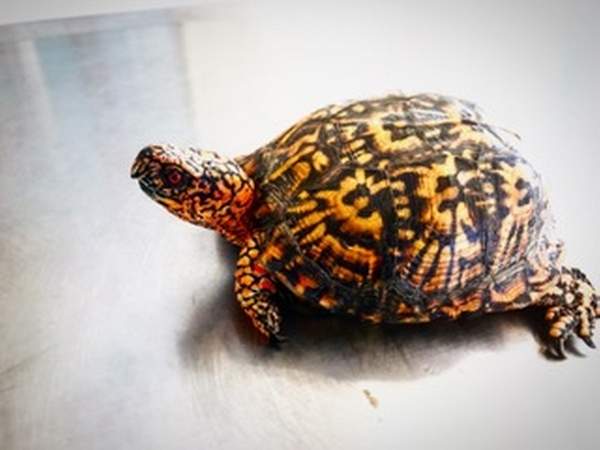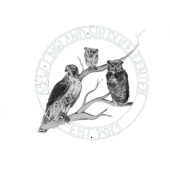
Winters on Cape Cod vary quite a bit from year to year. They can begin in October or maybe in December. They can end in April or stay mild all season. The animals respond to both the decreasing temperatures and the decreasing light.
In 2018, for example, it stayed quite warm through mid-November, and we noticed some animals had been sticking around longer and are still out foraging for food. We have had mice, squirrel, and vole babies brought into us. This was very unusual. When it really is cold enough to affect animal behavior, the different species cope in very different ways.
They may use different methods, but their goal is the same: they need to keep their body temperature at a level compatible with life, have enough energy stores to keep their systems functioning, and stay safe from predators while they are lying low. The primary modes of winter survival are migration, hibernation, brumation, and torpor.
Most of us are familiar with migration, watching the birds arrive in the spring and leave in the fall. There are eight species of birds in Massachusetts that are considered non-migratory. These include the wild turkey, mute swan, house sparrow, quail, European starling, rock dove, ruffed grouse and ring-neck pheasant. These birds live in Massachusetts year-round and can adjust to the change in temperature. There also are birds like the Snowy Owl that migrate down to us for the winter from colder climates.
The rest of the birds we enjoy all spring and summer choose to leave town, some heading to the Carolinas and Florida, and others, like the Osprey, heading into Central and South America. Then there are the birds like the Canada Goose that can and probably should migrate to give the golf courses a break but have adapted to it here and choose to stay the winter. Birds that are here in the winter can take care of themselves for the most part, but in really bad weather, it helps to put out some high-energy bird seeds and suet (never bread or crackers) and to make sure they have a water source that is not frozen.
Hibernation is the term for what warm-blooded animals do. It is a state of dormancy that occurs in the cold months. Their body temperature, heart rate, breathing rate, and metabolic rate slow down so they can conserve energy. Animals can hibernate for days, weeks or months. Only seven of the wildlife species in New England hibernate to some degree. Woodchucks, jumping mice, and bats (which we will discuss later) are the only true hibernators.
The other four — chipmunks, black bear, racoons and striped skunk — can come in and out of dormancy. Woodchucks hibernate for about 5 months and lose 30 percent of their body weight. Racoons can lose up to 50 percent of their body weight. To prepare, all the mammals will grow thicker fur to keep warm and consume more calories, so they have a cushion during lean hunting times, store food if they are not hibernating, and find shelter that can keep them dry and warm and protect them from the elements.
Brumation is hibernation for cold blooded animals. They can move on warmer, sunny winter days to find water unlike hibernators. Frogs, turtles, and other reptiles will burrow in pond mud once the weather gets colder. They will stay there until spring when the weather starts to slowly bring up their body temperature. They should never be disturbed from this state prematurely.
The Cape Wildlife Center gets quite a few turtles, like box turtles, snapping turtles, and painted turtles, that are injured. If they cannot be released from our care by October, they have to over-winter with us because they would not have time to start the brumation process before the weather gets too cold. The eastern box turtle pictured here is one we will keep probably until April or May. It was injured and needs more time to heal. So far this year, we are wintering seven turtles and expect more to come.
Torpor is what hibernation is called for bats. Before winter comes, bats start to increase their body weight by about 25 percent. These reserves will have to last about seven months. Bats go into torpor when the bugs stop flying and stay until the flying insects return. They find a dark place to hang upside down and lower their heart rate from about 200 beats per minute to about eight, and their body temperature from 100 degrees to 40 degrees. They manage fine unless their torpor is disturbed, which happens often when they choose to nest in houses, garages, or barns. Usually these bats are brought to us (if they are lucky) and we feed them to get their reserves back up and then mimic their environment to put them back into torpor until spring.
We currently have three bats wintering over with us. The bat in the photo came to us months ago with a fractured bone in his wing. Dr. Priya Patel, the center’s veterinarian, was able to pin it straight with a needle the size of a small sewing needle. The pin stayed in the wing until it was healed, and then removed. This delicate surgery was performed on a 20gm bat (the weight of four nickels). This bat will stay with us over the winter to gain strength and have physical therapy on his wing.
This winter, follow the ways of the animals: stay warm, make a cozy home, fill up on extra calories, or abandon ship and go South.
To learn more about the Cape Wildlife Center, visit www.capewildlifecenter.com or call 508-362-0111.
Caryn Ritchie is the volunteer coordinator for the Cape Wildlife Center and holds both a Massachusetts wildlife rehabilitator’s license and a federal permit to rehabilitate migratory birds. This is a repost of an article from The Barnstable Patriot, which you can read here.

Recent Comments